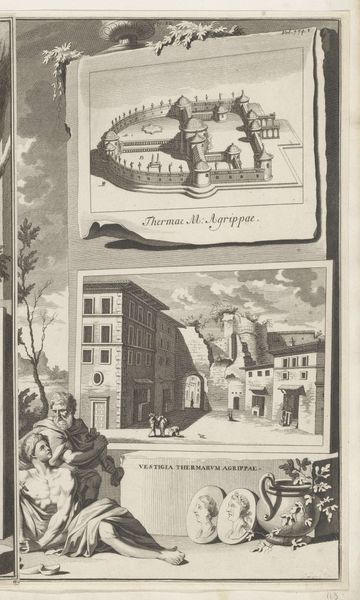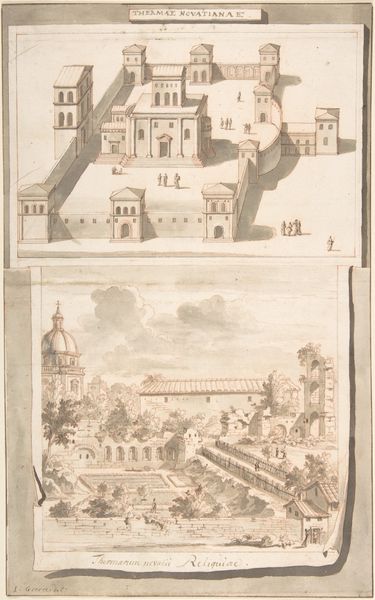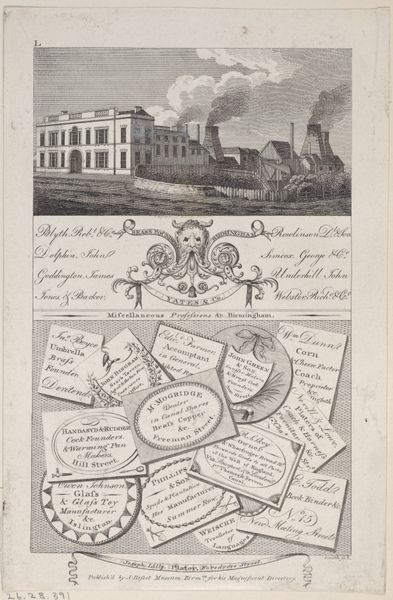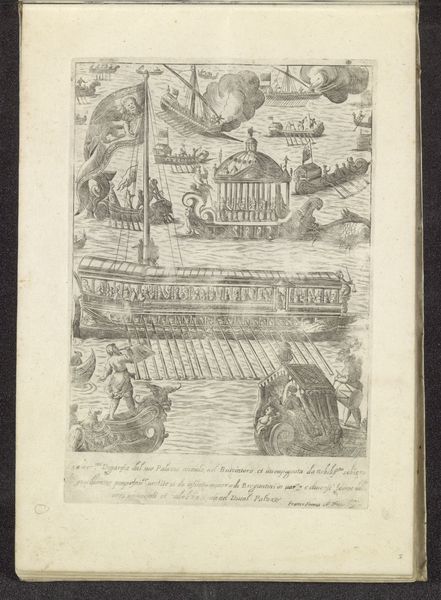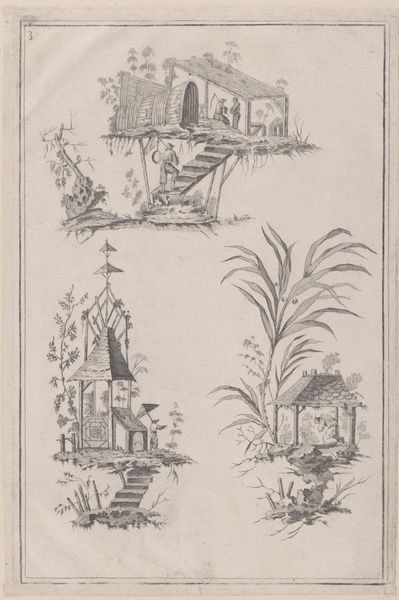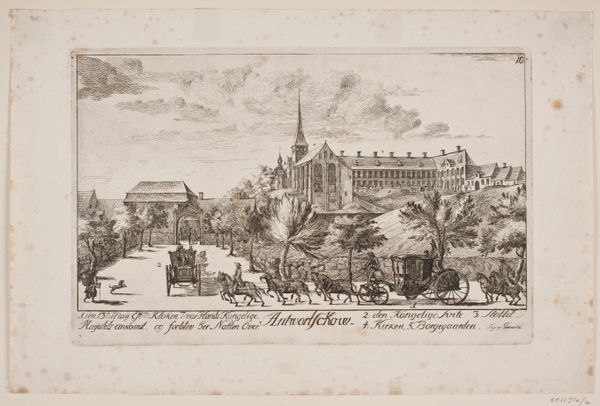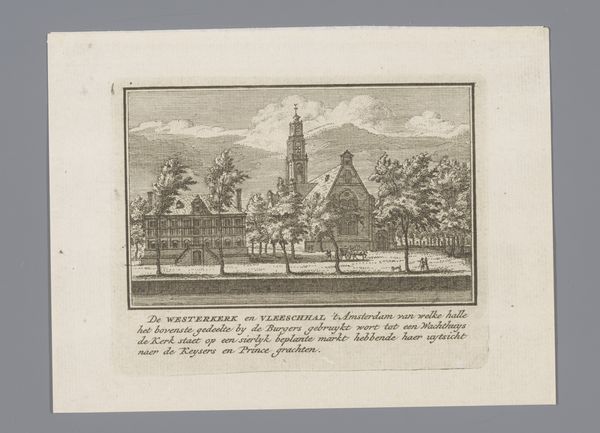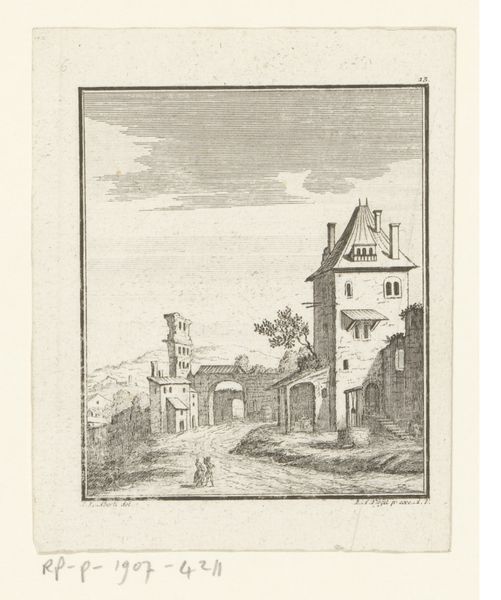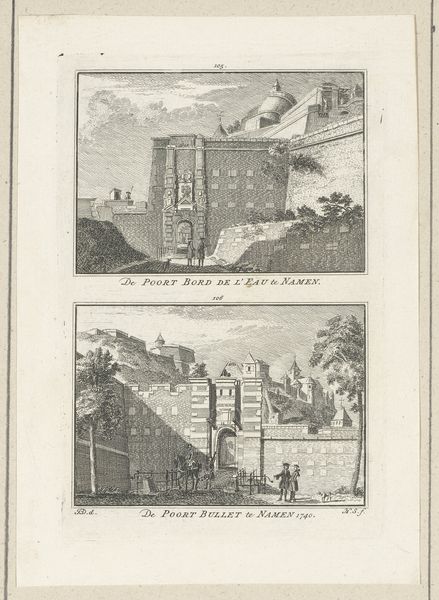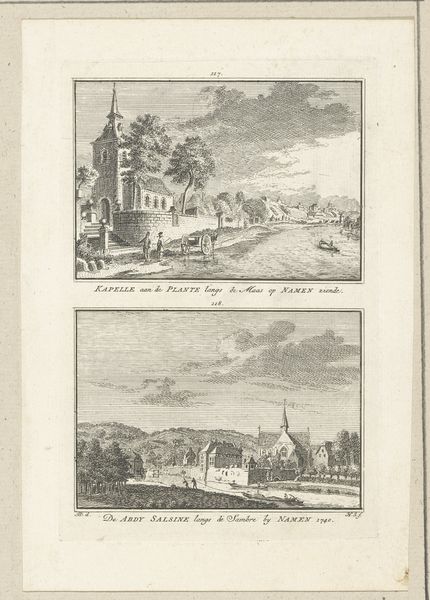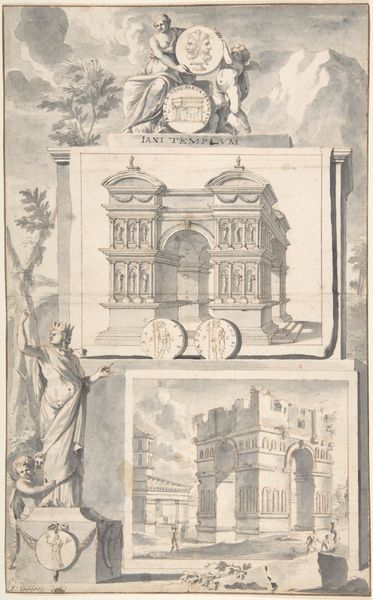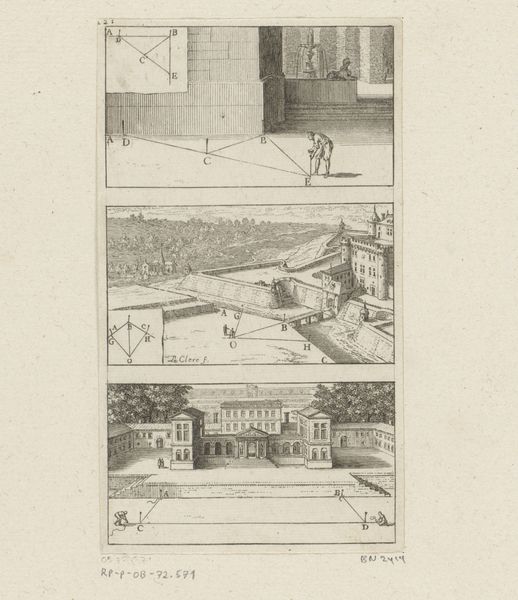
A Reconstruction of the Thermae Agrippae (above) and a View of the Ruins (below) 1690 - 1704
0:00
0:00
drawing, print, etching, ink, architecture
#
drawing
#
ink drawing
#
ink painting
# print
#
etching
#
landscape
#
etching
#
ink
#
men
#
watercolour illustration
#
architecture
Dimensions: 13 1.8 x 8 5/16 in. (0 x 21.1 cm)
Copyright: Public Domain
Editor: This ink drawing and etching by Jan Goeree, dating from 1690 to 1704, depicts “A Reconstruction of the Thermae Agrippae (above) and a View of the Ruins (below)." The contrast between the idealized rendering above and the ruined reality below really strikes me. What's your take on this juxtaposition? Curator: I find it a potent commentary on power, Editor. Notice how Goeree presents us not just with an architectural drawing, but a visual argument about history itself. The upper image idealizes Agrippa's baths, suggesting a peak of Roman civilization, while the lower half presents us with decay and loss. Editor: That’s a strong way to frame it. The drawings highlight decline, yes, but doesn't it also underscore the cyclical nature of civilizations rising and falling? Curator: Precisely. It invites us to contemplate how societies create legacies and what forces contribute to their erosion. This speaks to questions of cultural memory, preservation, and even colonial appropriation. The depiction of men in the foreground draws our attention to these questions about how cultures rise and fall, and how they shape human lives. Editor: How does it relate to the political context? Curator: Consider the timeframe, the late 17th century. European powers were actively engaging with and reimagining classical antiquity. Prints like these weren’t merely aesthetic; they fueled narratives about cultural superiority and legitimized political ambitions, which involved colonizing activities worldwide. Editor: It’s incredible how much context is packed into one image. Curator: Art isn't created in a vacuum, Editor. By understanding the power dynamics embedded within artistic choices, we can start deconstructing the grand narratives often presented to us. I invite all listeners to ask how images serve interests beyond what we can immediately discern.
Comments
No comments
Be the first to comment and join the conversation on the ultimate creative platform.
